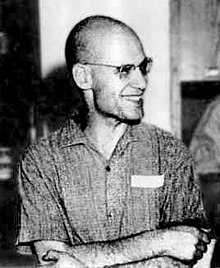Derived category of coherent sheaves and Fourier-Mukai transform
Master's dissertation project

Alexander Grothendieck is not only one of the greatest mathematicians of the last century, he is also a man with a fascinating story. He recieved a Fields Medal for his work, which is fundamental in many areas of modern mathematics, such as algebraic geometry and homological algebra.
His talk at the 1958 International Congress of Mathematics is perhaps the best example of his deep vision in mathematics. Among other things, he introduced the notion of scheme and sketched the construction of the derived category of coherent sheaves. This construction might seem a priori too abstract and pointless, but it is one of the best examples of mathematical beauty. After a long journey, we arrive to a place where things behave as they should! As it often happens when we pick the righ definition, the structure of the derived category of coherent sheaves appears in many different contexts and it has been proved to be powerful tool to uncover unexpected equivalences.
Surprinsingly enough, the derived category of coherent sheaves has become a crucial object in modern physics. In another memorable talk at the 1994 International Congress of Mathematics, Maxim Kontsevitch (also awarded with a Fields Medal), suggested that the derived category is the appropriate framework for the main physical objects of one of the 5 versions of String theory, namely Type IIB String theory. In this talk he introduced Homological mirror symmetry, a program to show, using an equivalence of derived categories, that Type IIA and Type IIB String theories are different mathematical manifestations of the same physical reality. But that is another story...
The project
The main objective of this project is to study the construction and the main properties of the derived category of coherent sheaves over a projective scheme.The milestones of the project are:
- Basics in algebraic geometry: projective schemes and coherent sheaves.
- Cohomology and derived functors.
- Construction of the derived category.
- Coherent duality.
- Integrable functors and Fourier-Mukai transforms.
Prerequisites
It is advisable, although not essential, to have followed:Recomended bibliography
- Éléments de geométrie algébrique, A. Grothendieck.
- Algebraic Geometry, R. Hartshorne, Springer (1977).
- Complex Geometry, D. Huybrechts Springer (2005).
- The Geometry of Schemes, D. Eisenbud and J. Harris, Springer (2000).
- Derived categories for the working mathematician, R. P. Thomas.
- Categories and Sheaves, M. Kashiwara and P. Schapira, Springer-Verlag (2006).
- Fourier-Mukai and Nahm Transforms in Geometry and Mathematical Physics, C. Bartocci, U. Bruzzo and D. Hernández Ruipérez, Birkhäuser (2009).
- Fourier-Mukai Transforms in Algebraic Geometry, D. Huybrechts, Oxford University Press (2007).
Back to Emilio Franco's webpage